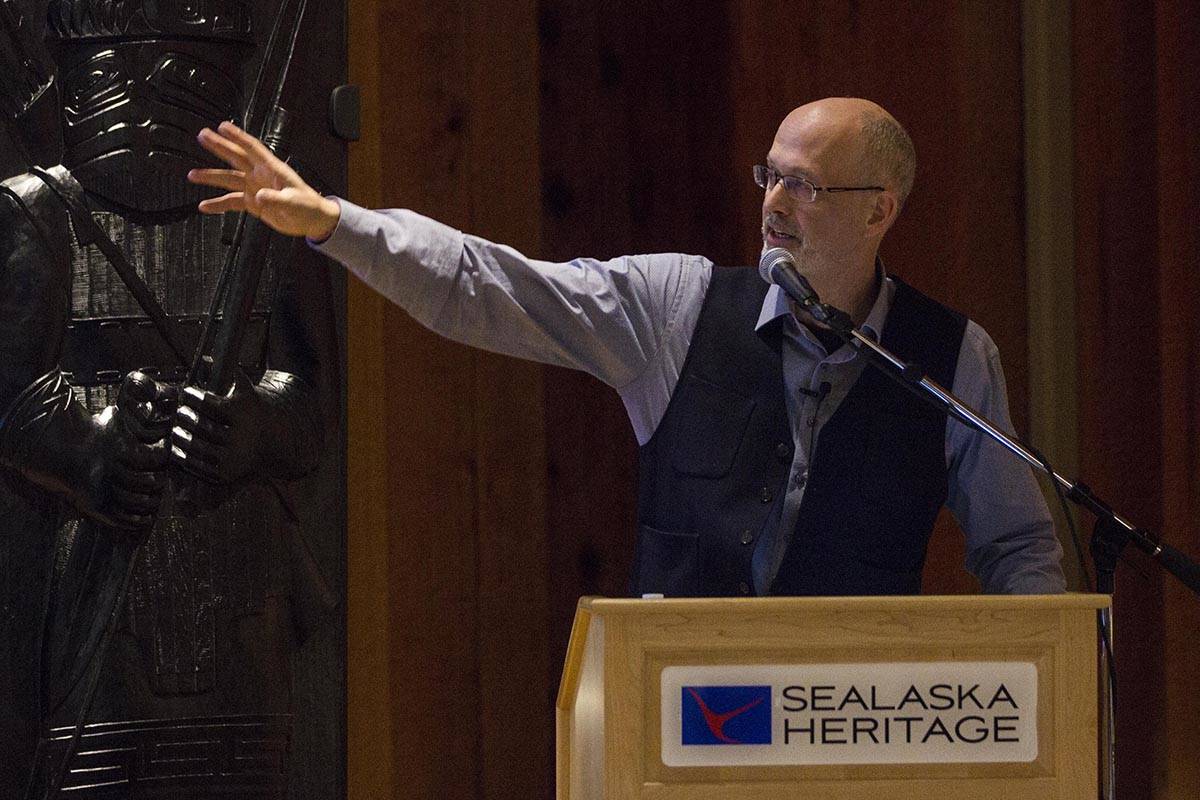The practice of harvesting and trading herring eggs for subsistence is an old one in Southeast Alaska.
But it’s one that’s threatened by commercial fishing activity and shortened harvesting periods, a University of Alaska Southeast professor said during a presentation at the Sealaska Heritage Institute on Tuesday.
Tom Thornton, dean of Arts and Sciences at UAS, delivered “Herring Egg Distribution in Alaska: Generosity, Reciprocity, and Benefit Flows,” a lecture about some of the intangible benefits that come from the spring harvest of herring eggs, to more than 30 people. The lecture was the last in a series at SHI’s Walter Soboleff Building for Native American and Alaska Native Heritage Month.
Herring spawn in the spring, usually in late March and early April, in the waters around Sitka. They leave their eggs on kelp strands or on tree branches left in the water for the purpose. Once they’re harvested, about 40 % of the intake stays in Sitka, and the other 60 percent is distributed around the region and the state. About 87 % of herring eggs on average are distributed in one form or the other instead of being retained by the subsistence harvesters.
“It also has to be distributed in a very short period of time if you want them to get there fresh,” Thornton said. “It’s a big spike in the air cargo.”
[Sitka Tribe revives Tlingit herring party]
The commercial harvest of herring roe is primarily exported to Japan, where the eggs are known as kozunoko. Thornton said the demand for the kozunoko has declined in recent decades, however, and the price is commensurately dropping. The fish are sold to other countries in Asia for things like fertilizer and food for farm fish.
“State subsistence areas are protected by state and federal law and must provide for those uses first before providing for commercial and recreational uses,” Thornton said. “I think the Alaska state constitution is actually quite progressive — it’s one of the few state constitutions that actually talks about sustainable use.”
About 80-90 % of the households in Sitka take part in the harvest, Thornton said.
The amount of herring eggs harvested is on the decline, Thornton said.
Decades ago, he said the harvest brought in 400-500,000 pounds of herring eggs. Now, it’s about 250,000 pounds.
“Production has become more specialized and concentrated,” Thornton said. “Households that have the equipment, means, and labor do 70-80 % of harvesting.”
[Tribe takes state to court in attempt to protect herring]
Those eggs will make their way into the hands of between 5,000 and 10,000 people across Southeast Alaska — mostly to Alaska Natives. The eggs are used for communal meals, for ceremonies, and for other traditional purposes.
“The distribution of herring eggs is an age-old system — complex, adaptive, and resilient — which is remarkable,” Thornton said. “It’s largely a self managed system, with very little regulation.”
The Sitka Tribe applied for an injunction against the Alaska Department of Fish and Game requiring them to develop a new plan for herring fisheries in the region in 2018, Thornton said. The injunction would limit the percentage of herring that commercial fisheries could harvest in Sitka Sound.
That injunction was denied, and it’s expected to go to trial.
“There are these social values, there are these social benefits, but they don’t count when you testify to the board of fisheries here,” Thornton said.
• Contact reporter Michael S. Lockett at 757-621-1197 or mlockett@juneauempire.com.

